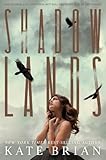Is This Ostrich Egg Globe, The Oldest Depiction Of The 'New World'?
Language
Reading Level
Listen to Article
An intricately carved globe pieced together from two bottom shells of ostrich eggs may have just taken over the title of the oldest depiction of the 'New World', from the copper etched Hunt-Lenox globe that lies in The New York Public Library. What is even more interesting is that ostrich globe which is believed to have been created between 1504-1506 used Leonardo Da Vinci's unique 'triangle' technique to transfer the 2-dimensional map drawing into a 3-dimensional sphere, leading Belgian cartographer Stefaan Missinne to speculate that it may be the work of a skilled artist from Da Vinci's Florence studio.
Though that cannot be confirmed for sure, one thing is certain. Whoever etched the map had access to all the latest information from explorers like Christopher Columbus and Amerigo Vespucci. That's because it depicts the then known information about the Western Hemisphere or the 'New World' with great accuracy. The knowledge was of course a little sparse and the area was etched with just seven 'lands', with North America represented by two small islands. South America was a little more accurate with three names - Mundus novus (New World), Terra Sanctae Crucius or 'land of the holy cross', Terra de Brazil. Also depicted for the first time ever, were the islands of Japan.
But as was with everything during ancient times, the sphere was not just about showing where lands lay. It also told stories - A nameless sole ship is shown tossing on the waves in the Indian Ocean, whilst off the coast of Southeast Asia a Latin inscription “HIC SVNT DRACONES” or 'Here are the Dragons', warns of the legendary monsters.
So how did such an amazing old artifact stay hidden from the public eye all these years? That is the big mystery and one that is leading to some skepticism among the cartographers who haven't had a chance to examine the ancient globe. According to Stefaan Missine, the rare map expert who confirmed the sphere's authenticity and published his findings in the prestigious cartography journal Portolan on August 19th, the map had been in the possession of private European collectors for many years. It finally came to market at a 2012 map fair in London and was purchased by an anonymous collector who agreed to let Stefaan conduct extensive research to verify its authenticity.
The map expert says that just like others he too was very skeptical at first. However after putting it through extensive testing, including computer tomography and carbon dating of both the egg and the ink that covers the engraved surface, he became convinced that it may be the real thing. However, he did not stop there. He then hired a radiologist to take photos so that he could compare the density of the old egg shells to that of new ones. The older egg shell showed a loss of over 50% of its calcium bone density consistent with what would be expected considering its age. In addition, he also performed extensive geographical, cartographic and historical analysis as well as consulted with 100 of the world's leading scholars before finally declaring the egg as 100% authentic.
However, all this extensive research still does not seem to have convinced everyone. Among the biggest skeptics is John Hessler, the curator of the Geography and Map Division at the Library of Congress in Washington, D.C. who says that the thing that concerns him the most, is the lack of credible ownership history. And while he doesn't dispute the fact that the egg may be from the 16th century, he wonders if the etching was added on later. The other thing that is concerning some experts is the egg globe's close resemblance to the copper Hunt-Lenox globe, so much so, that even the typos are identical. Missine believes that this is further proof that the ostrich globe is the oldest and may even be the model that was used to cast the previous record holder.
No matter what the truth, the one thing no one is disputing is that finding a globe on an ostrich eggshell is very rare - Which in itself makes this artifact priceless not to mention, pretty cool!
Resources: nationalgeographic.com,dailymail.co.uk,washmapsociety.org,blogs.discovermagazine.com,
Cite Article
Geography
Learn Keywords in this Article
117 Comments
- manuellotaover 12 yearsI think it is very authentic. I wonder why it is not in a museum. Have the scientist checked it for DNA. I want to go to New York and see it.
- diachokkjover 12 yearsI really enjoyed this article,it had so many interesting facts. One of the most interesting facts was, the shell was carved by hand. It says that in the first paragraph. I wonder what it was like when they were doing all those tests.
- gorzelanskismover 12 yearsI really enjoyed this article ,it had so many interesting facts.One of the most interesting facts was that the shell was carved by hand or at least we think so.It says that in the first paragraph.I wonder what it looked like while they did all of the tests.
- santillitdover 12 yearsI think that the egg is really cool. It is amazing that it didn't break. I do think the egg is the real thing. It would be cool to see the egg in person.
- couchamover 12 yearsI LOVED the article because the eggshell is a MAP!!! The egg was an ostrich egg, and that totally stuns me cause it's a carved original animal egg!!! And "HIC SVNT DRACONES" kinda freaks me out... but dragons don't exist :)
- christophercmover 12 yearsI think this article is very intresting. Because I have never seen such a great peace of art.Wow how do people think of this stuff?I wonder how they make the big ones?
- jensenerover 12 yearsI think that there are lots of other eggs in the world.What do u think?
- jordanseover 12 yearsI find this passage very interesting.I wonder if the egg is the real thing!So far,I think the egg is real.However,if they can think like geolegists,and prove it's real with super old rock style,I'd be suprized!Thanks!
- santillitdover 12 yearsI learned that the egg is real and very cool.I think that the article was cool.I want to learn more about it some time again.I still cant believe that it did not break.
- saundersonabover 12 yearsI believe that there are not that many other eggs that have maps on them but maybe lots of replicas. It is weird because it is a ostrich egg and has a map of when Christopher Columbus "Sail the Ocean Blue" and other events.

